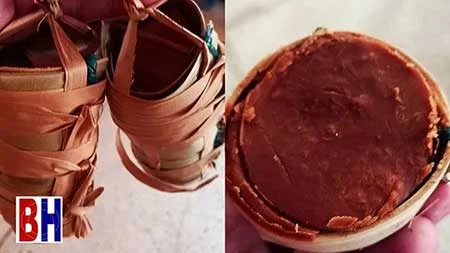[CULTURE] How the Pakaskas of Verde Island, Batangas is Made
Verde Island, or Isla Verde as it is locally known, is a volcanic land mass some five kilometers or so south of Barrio Ilijan in Batangas City, along the sea lane from Batangas Port to Calapan in Oriental Mindoro. It is made up of six barangays which are all administered as part of the province’s capital of Batangas City.
While the island has been known more for its marine biodiversity and a limited number of resorts for diving and snorkeling, it also has a product that is little known outside of Batangas but has nonetheless been a favorite snack or dessert for Batangueños through the years — “pakaskas” or buri palm sugar.
Buri palm, otherwise known as corypha, is a plant native to India, Malaysia, Indonesia, New Guinea, parts of Australia and, of course, the Philippines1. Typical of palm trees, the buri palm and the parts that it is made of can be put to good use from thatched materials for houses to woven products such as cloths, hats, mats and many others2.
The plant is abundant on Verde Island, where farmers extract its sap to convert into vinegar, a coconut wine locally known as “tuba” and, of course, palm sugar. Each morning, farmers climb their trees with their plastic containers to collect the sap from the treetops.
When sufficient amounts of the sap have been collected, these are placed in a cauldron, or “tulyasi” in Tagalog, and boiled and stirred continually for hours over a wood-fired stove until the sap turns to caramel. After the sap has completely caramelized, the caudron is removed from the fire and set aside to cool.
The caramel is still stirred occasionally while it cools to achieve the correct consistency. When done, it is scooped using a spatula and pasted onto molds made from dried buri palm leaves called “casitas.” These are then set aside to cool down completely and, thus, solidify3.
The caramel that sticks to the sides of the cauldron is scraped off with the spatula, and the act of doing so, “kinakaskas” in the Batangas dialect, is how the “pakaskas” gets its name.
When the caramel has completely cooled down in the “casitas,” these are then piled one on top of the other and bound using buri palm strings. The pile or stack is called “talakid” in Batangas Tagalog. It is these “talakids” hanging from a pole in market stalls that the people of Batangas instinctively recognize as the “pakaskas,” eaten as a quick snack or dessert or even used as a sweetener.
2 “Structural Characterization of Buri (Corypha utan Lam.) Petioles, by Rosalie M. Calapis, Vivian C. Daracan, Stella Villa A. Castillo, Wilfredo M. Carandang and Willie P. Abasolo, published June 2011 in the Philippine Journal of Science, online at DOST.
3 A Rare Sugar from the Philippines is Disappearing (The Pakaskas of Isla Verde, Batangas), uploaded January 2023 by FEATR.

